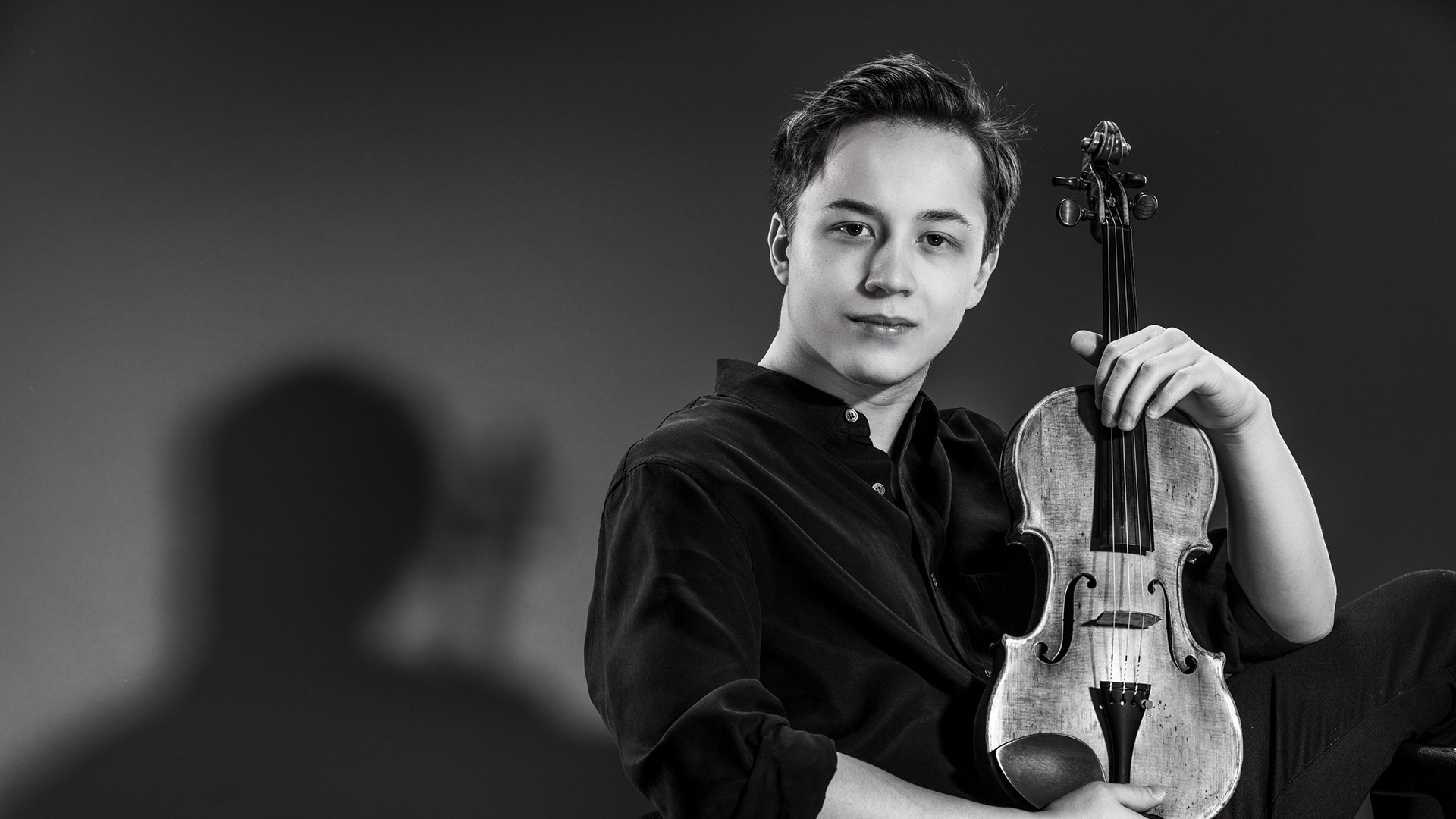The young violinist Johan Dalene is a storyteller of concert halls whose international crowd of admirers grows with each concert and recording.
Swedish-Norwegian Johan Dalene is a storyteller of concert halls whose international crowd of admirers grows with each concert and recording. Gramophone magazine named the evening's violin soloist Young Artist of the Year in 2022. Having recovered from a lightning marriage and divorce, Pyotr Tchaikovsky went through difficulties to victory as he pushed on with his fourth symphony. “Deep down in my heart, I believe this is the best thing I've ever composed.”
Erich Korngold: Violin Concerto
Erich Wolfgang Korngold (1897–1957) composed a ballet when he was 11, two operas as a teenager, and was still only 23 when he wrote his highly-successful Die tote Stadt. In 1934, he fled to America to escape the Nazis. He was immediately snapped up by Hollywood, and won two Oscars for film scores. His style did not, however, appeal to some, who accused him of pandering to popular taste, and as if to prove his artistic worth, he composed a Violin Concerto in 1945. In doing so, he achieved the impossible: bowing simultaneously to the film and classical music traditions and remaining firmly entrenched in the virtuoso tradition of the Late Romantics. Jascha Heifetz, the soloist at the premiere in 1947, adopted the concerto as his great showpiece for years to come.
Though rooted in the Classical tradition, the concerto is by nature cinematographic and draws on some of Korngold’s own Hollywood themes. The main theme of the opening movement is from the film Another Dawn, and the second theme is from Juarez. Almost all the second movement consists of variations on a theme from Anthony Adverse, and the finale folk dances take up the beat of The Prince and the Pauper.
Pyotr Tchaikovsky: Symphony No. 4 in F Minor, Op. 36
Pyotr Tchaikovsky (1840–1893) wrote his fourth symphony in 1877. Always self-critical, he wondered whether anyone would ever listen to it once he had left this world. He need not have been pessimistic, for it is still one of his most popular works. Describing it in a letter to its dedicatee Nadezhda von Meck, he explained that the opening fanfare is Fate: “that fateful force which prevents the impulse to happiness from attaining its goal.” The second movement captures “that melancholy feeling that comes in the evenings when, weary from your labour, you sit alone, and take a book”; the third “the elusive images that can rush past in the imagination when you have drunk a little wine”; and the finale “a picture of festive merriment”.
The fate to which Tchaikovsky refers may have been his homosexuality. Some of the motifs, on the other hand, point to the aria in Bizet’s Carmen when she sees her death forecast in the cards. Be that as it may, the symphony also expresses the ultra-romantic idea (which Tchaikovsky admitted having borrowed from Beethoven’s fifth symphony) of victory over adversity.
Violin 1
Pekka Kauppinen
Kreeta-Julia Heikkilä
Pekko Pulakka
Eija Hartikainen
Katariina Jämsä
Helmi Kuusi
Elina Lehto
Ilkka Lehtonen
Jani Lehtonen
Kari Olamaa
Kalinka Pirinen
Petri Päivärinne
Satu Savioja
Elina Viitasaari
Totti Hakkarainen
Venla Saavalainen
Violin 2
Kamran Omarli
Teija Kivinen
Heini Eklund
Maaria Leino
Teppo Ali-Mattila
Liam Mansfield
Siiri Rasta
Krista Rosenberg
Terhi Ignatius
Anna-Maria Huohvanainen
Sanna Kokko
Virpi Taskila
Eleonora Oswald
Neea-Noora Piispa
Viola
Torsten Tiebout
Petteri Poijärvi
Lotta Poijärvi
Aulikki Haahti-Turunen
Tuomas Huttunen
Tiila Kangas
Ulla Knuuttila
Carmen Moggach
Mariette Reefman
Hajnalka Standi-Pulakka
Hanna Semper
Charlotta Westerback
Cello
Tuomas Ylinen
Beata Antikainen
Basile Ausländer
Mathias Hortling
Veli-Matti Iljin
Jaakko Rajamäki
Saara Särkimäki
Aslihan Gencgonül
Fransien Paananen
Hans Schröck
Bass
Ville Väätäinen
Adrian Rigopulos
Paul Aksman
Eero Ignatius
Oskari Hänninen
Venla Lahti
Akseli Porkkala
Eero-Kalle Bergman | Flute
Niamh Mc Kenna
Jenny Villanen
Elina Ceprova
Oboe
Hannu Perttilä
Paula Malmivaara
Clarinet
Taavi Orro
Anna-Maija Korsimaa
Heikki Nikula
Bassoon
Markus Tuukkanen
Vertti Tapanainen
Horn
Mika Paajanen
Miska Miettunen
Jonathan Nikkinen
Joonas Seppelin
Trumpet
Thomas Bugnot
Obin Meurin
Trombone
Valtteri Malmivirta
Anu Fagerström
Joni Taskinen
Tuba
Ilkka Marttila
Timpani
Tomi Wikström
Percussion
Mikael Sandström
Xavi Castelló Aràndiga
Pasi Suomalainen
Harp
Minnaleena Jankko
Keyboard
Minna Koskimies |

